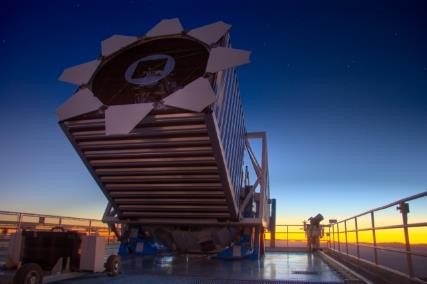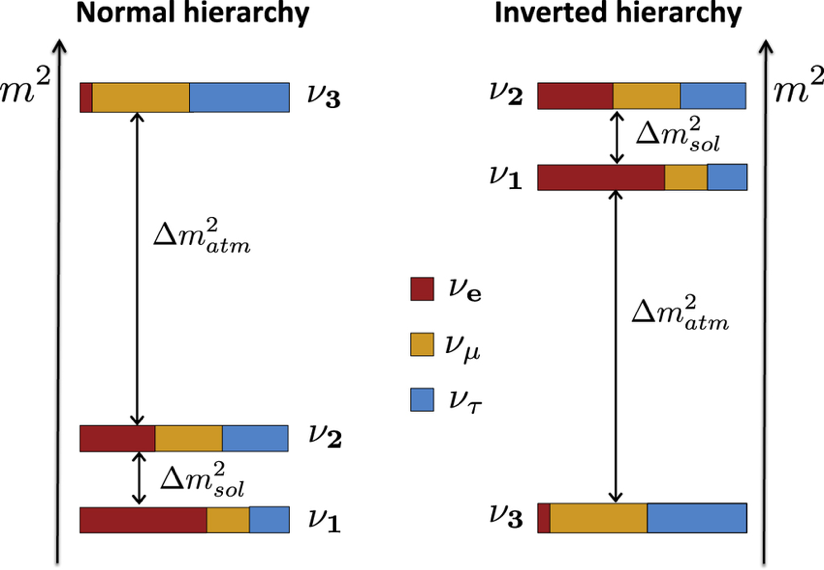
Figure 1: SDSS telescope located at the Apache Point Observatory in New Mexico, USA. It allows, among other things, the study of quasars (credit: SDSS Collaboration).
A team from IRFU's Department of Particle Physics (DPhP) has just conducted the most accurate study to date of the mass of cosmic neutrinos, including both standard model neutrinos and sterile neutrinos contributing to dark matter.
The researchers used the spectra of nearly 200,000 distant quasars measured by the Sloan Digital Sky Survey (SDSS) eBOSS project to map the distribution of hydrogen at very remote times in the history of our universe, ten to twelve billion years ago.
Neutrinos, propagating at relativistic speeds for billions of years, prevent gravity from acting on small scales and smooth the structures (clusters of galaxies, filaments, ...) revealed by the spectra of quasars. Thanks to the accuracy of the measurements, researchers have been able to narrow the possible range for the mass of cosmic neutrinos, to the point of being able to have their word on how the different masses of the three neutrinos of the Standard Model are ordered.
Even more quasars with the SDSS telescope:
The SDSS has measured the spectra of nearly 200,000 quasars. These sources are true cosmic monsters whose voracious central black hole, a few million to billions of times heavier than our Sun, heats the matter that is engulfed in it and that emits, in the process, as much light as an entire galaxy. Quasars are thus among the brightest sources in the Universe, visible billions of light years away from us. The light they emit, more than ten billion years ago, is partially absorbed on its trajectory by hydrogen, which constitutes the bulk of the intergalactic medium. The marks left by this absorption in the spectrum of distant quasars make it possible to map cosmic hydrogen. From a strict selection of the quasar spectra exhibiting the most reliable information, and through a rigorous study of all the effects that can alter the result, the DPhP team has obtained the most accurate measurement to date of the statistical properties of the spatial distribution of intergalactic hydrogen. Moreover, this new publication goes even further back in the history of the Universe, adding new measurements for quasars over 12 billion years old.

Figure 2: The oscillations observed for atmospheric neutrinos and solar neutrinos only measure the difference in mass squared and not the absolute mass of the neutrinos. If the lowest mass is almost zero, the minimum sum of the neutrino masses is twice the term atmospheric ?m^2 in the case of the inverted mass hierarchy, and only once in the case of the normal hierarchy.
The mass of the neutrinos in the standard model:
These results are crucial in several ways. For cosmic neutrinos first of all. These particles are the lightest ones in the standard model of particle physics, and their absolute mass is still unknown. So far only limits, upper or lower (depending on the techniques considered) are known.
Neutrinos are remarkably abundant, no less than 360 neutrinos per cm3 in the Universe, almost as many as photons. Propagating at relativistic speeds for billions of years, neutrinos slow down the gravitational collapses that give rise to galaxies and galaxy clusters, but also to hydrogen filaments. Their impact on the distribution of matter, let alone hydrogen, in the universe will betray them. It is by this means that researchers can locate their trace, and can deduce their mass. Through a joint analysis of the latest measurements from the SDSS and the Planck satellite, DPhP researchers were able to establish that the sum of the masses of the three neutrino species could not exceed 0.11 eV at 95% confidence, a limit that is reduced to 0.09 eV when other cosmological constraints are added, such as the measurement of the Baryonic Acoustic Oscillation Scale, or BAO (see 2017 Highlight).
At this level of precision, the result obtained disadvantages the scenario according to which two of the three neutrino species would be distinguished by significantly higher masses (so-called inverted mass hierarchy), which would lead to a sum of their masses of at least 0.10 eV, contrary to the natural hypothesis of a single neutrino significantly heavier than the other two (so-called normal mass hierarchy) and allowing a sum of the masses of the order of only 0.06 eV, as shown in figure 2.
Searching for dark matter with sterile neutrinos:
These new measures also enhance our understanding of the nature of dark matter, in the form of "warm dark matter". These are dark matter particles with a mass of the order of a few keV. In this case, their velocities are still very high in the very early stages of structure formation, and the associated flow prevents gravity from acting on small scales, which is again visible in the distribution of hydrogen in the universe. These particles could be sterile neutrinos, a hypothesis that is all the more interesting since astrophysical X-ray observations of galaxy clusters by the XMM satellite have identified a 3.5 keV line. This line could suggest the existence of such particles with a mass of 7 keV.
By studying an even more distant, and therefore more primordial Universe, these new measurements are much more sensitive to the existence of warm dark matter in the form of particles with a mass of the order of keV. In fact, they have given limits more than twice as high as previous publications. These measurements exclude warm dark matter particles of less than 10 keV, which corresponds to sterile neutrino masses of more than 80 keV in the simplest production model.
Contact: Nathalie Palanque-Delabrouille, Christophe YECHE
________________________________________
Publications:
• The onedimensional power spectrum from the SDSS DR14 Lyman-alpha forests, JCAP 07, 017 (2019) – arXiv:1812.03554
• Hints, neutrino bounds, and WDM constraints from SDSS DR14 Lymanalpha and Planck full-survey data, soumis à JCAP – arXiv:1911.09073
• Structure and evolution of the Universe › Evolution of the large structures and galaxies The ultimate constituents of matter › Neutrino Physics
• Institute of Research into the Fundamental Laws of the Universe • The Particle Physics Division
• BAO
